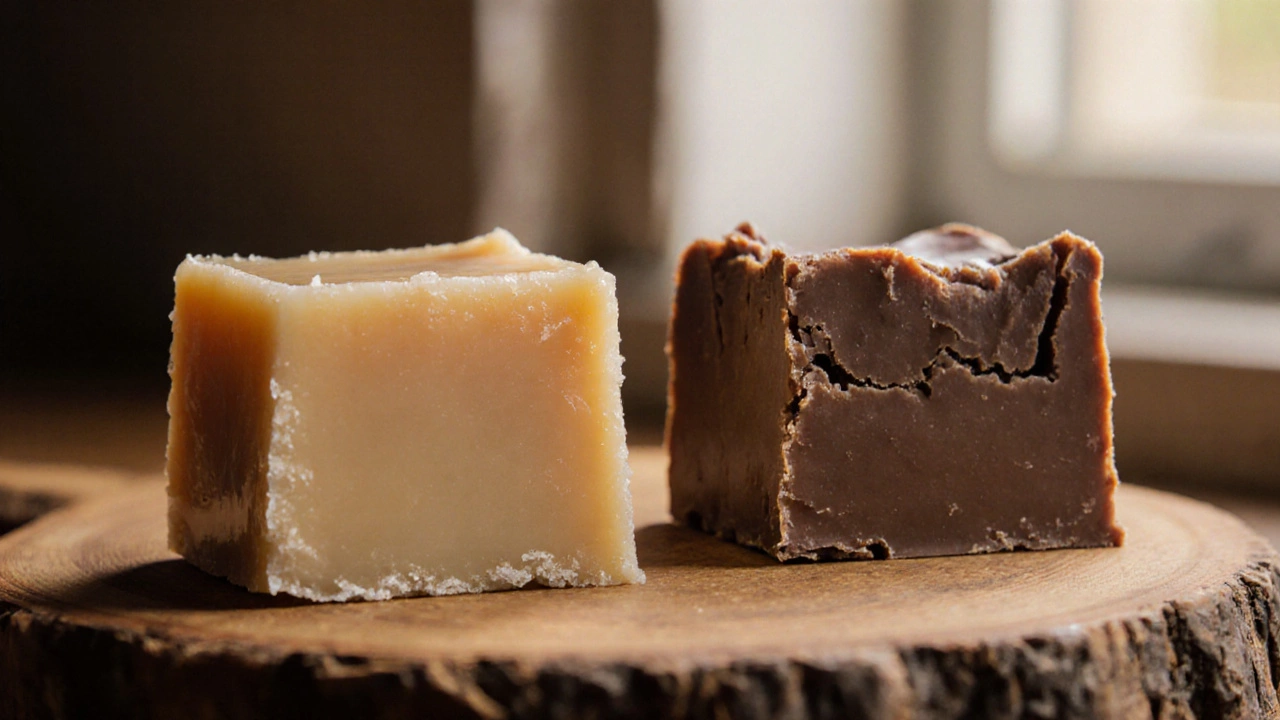
Why Is My Fudge Chewy? Common Causes and How to Fix It
Learn why fudge can turn chewy and how to fix it with clear steps, temperature charts, and troubleshooting tips for perfect smooth fudge every time.
When working with chewy fudge, a soft, melt‑in‑your‑mouth candy made from sugar, butter, and milk. Also known as soft fudge, it thrives on precise temperature control and proper cooling. The key to that signature chew is hitting the right "soft‑ball" stage on your candy thermometer and letting the mixture rest just long enough to set without drying out. If you skip the pause, the fudge can turn grainy or hard, losing the pleasant chew everyone loves.
One of the biggest mistakes bakers make is ignoring fudge storage, the method you use to protect fudge after it cools. Store it in an airtight container at room temperature for up to two weeks, or wrap individual pieces in wax paper before refrigerating to extend shelf life. Adding a thin layer of melted chocolate or a light dusting of cocoa powder creates a moisture barrier, helping the fudge stay soft and preventing a crust from forming. For longer keep‑outs, the freezer works fine—just make sure the wrap is tight and let the fudge come back to room temperature before serving to restore its chew.
Another often‑overlooked factor is fudge texture, the balance of smoothness and firmness that defines a good piece. Texture is shaped by the ratio of butter to milk, the type of sugar used, and how long you beat the mixture after it reaches the soft‑ball stage. Adding a pinch of corn syrup or using brown sugar can enhance chewiness, while too much butter may make the fudge greasy. Experiment with a quick 30‑second whisk once the fudge cools on the slab; this introduces tiny air bubbles that keep the bite from feeling dense.
Finally, if you’re making homemade fudge, your own version of this classic candy, treat the process like a small science experiment. Record the exact temperature, cooling time, and any flavor add‑ins you use. Over time you’ll spot patterns—maybe a lower temperature gives you a softer chew, or a longer resting period yields a firmer slice. Armed with that data, you can fine‑tune each batch for consistently perfect chew.
All these details—temperature, storage, texture tweaks, and personal notes—connect together to give you reliable, chewy fudge every time. Below you’ll find a curated set of articles that dive deeper into each of these points, from preventing hardening to mastering freezer storage. Let’s explore the tricks that will keep your fudge soft, tasty, and ready for any celebration.

Learn why fudge can turn chewy and how to fix it with clear steps, temperature charts, and troubleshooting tips for perfect smooth fudge every time.